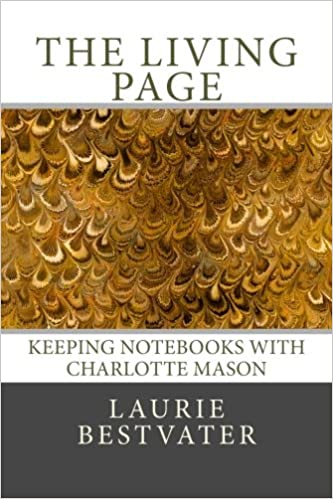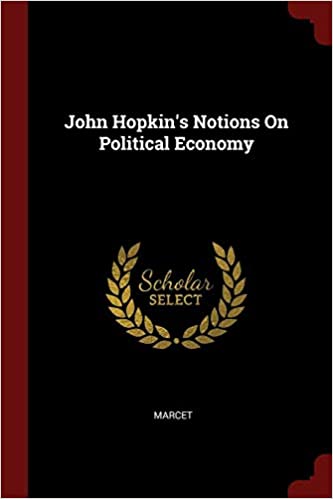Kim
This novel tells the story of Kimball O' Hara (Kim), who is the orphaned son of a soldier in the Irish regiment stationed in India during the British Raj. It describes Kim's life and adventures from street vagabond, to his adoption by his father's regiment and recruitment into espionage.
More info →The Living Page
"We all have need to be trained to see, and to have our eyes opened before we can take in the joy that is meant for us in this beautiful life." Charlotte Mason ~~~~~~~ "Composition books and blank journals are readily available at every big box and corner store, available so inexpensively as to be common and ironic as we reach that digital dominion, the projected 'paperless culture.' Shall we despair the future of the notebook? Is the practice an anachronism in an age where one's thoughts and pictures, doings and strivings are so easily recorded on a smartphone or blog,and students in even the youngest classrooms are handed electronic tablets with textbooks loaded and worksheets at the ready? Or is there something indispensable in the keeping of notebooks without which human beings would be the poorer?" THE LIVING PAGE invites the reader to take a closer look in the timeless company of 19th century educator, Charlotte Mason.
More info →Prisoners of Geography: Ten Maps That Explain Everything About the World (Politics of Place)
Offering “a fresh way of looking at maps” (The New York Times Book Review), Marshall explains the complex geo-political strategies that shape the globe. Why is Putin so obsessed with Crimea? Why was the US destined to become a global superpower? Why does China’s power base continue to expand? Why is Tibet destined to lose its autonomy? Why will Europe never be united? The answers are geographical. “In an ever more complex, chaotic, and interlinked world, Prisoners of Geography is a concise and useful primer on geopolitics” (Newsweek) and a critical guide to one of the major determining factors in world affairs.
More info →John Hopkin’s Notions On Political Economy
This work has been selected by scholars as being culturally important, and is part of the knowledge base of civilization as we know it. This work was reproduced from the original artifact, and remains as true to the original work as possible. Therefore, you will see the original copyright references, library stamps (as most of these works have been housed in our most important libraries around the world), and other notations in the work.
This work is in the public domain in the United States of America, and possibly other nations. Within the United States, you may freely copy and distribute this work, as no entity (individual or corporate) has a copyright on the body of the work.
More info →The Money Mystery: The Hidden Force Affecting Your Career, Business, and Investments (An Uncle Eric Book)
During the 1980s the velocity of circulation of the dollar became erratic; now the whole country is affected. "The Money Mystery" explains why Federal Reserve officials remain so afraid of inflation, explains precautions you should take, and explains the wild swings in the stock market. Few analysts understand what velocity is doing to the economy. Learn what you can do about it. This third edition includes an all new chapter titled A New, or Very Old, Form of Inflation.
"The Money Mystery" is the first sequel to "Whatever Happened to Penny Candy?" and provides essential background for getting the most from "The Clipper Ship ", both books are also available through Amazon.
More info →Dumbing Us Down – 25th Anniversary Edition: The Hidden Curriculum of Compulsory Schooling
After over 100 years of mandatory schooling in the U.S., literacy rates have dropped, families are fragmented, learning "disabilities" are skyrocketing, and children and youth are increasingly disaffected. Thirty years of teaching in the public school system led John Taylor Gatto to the sad conclusion that compulsory governmental schooling is to blame, accomplishing little but to teach young people to follow orders like cogs in an industrial machine.
More info →Six Easy Pieces: Essentials of Physics Explained by Its Most Brilliant Teacher
The History of the Renaissance World: From the Rediscovery of Aristotle to the Conquest of Constantinople
Beginning in the heady days just after the First Crusade, this volume―the third in the series that began with The History of the Ancient World and The History of the Medieval World―chronicles the contradictions of a world in transition.
Popes continue to preach crusade, but the hope of a Christian empire comes to a bloody end at the walls of Constantinople. Aristotelian logic and Greek rationality blossom while the Inquisition gathers strength. As kings and emperors continue to insist on their divine rights, ordinary people all over the world seize power: the lingayats of India, the Jacquerie of France, the Red Turbans of China, and the peasants of England.
New threats appear, as the Ottomans emerge from a tiny Turkish village and the Mongols ride out of the East to set the world on fire. New currencies are forged, new weapons invented, and world-changing catastrophes alter the landscape: the Little Ice Age and the Great Famine kill millions; the Black Death, millions more. In the chaos of these epoch-making events, our own world begins to take shape.
Impressively researched and brilliantly told, The History of the Renaissance World offers not just the names, dates, and facts but the memorable characters who illuminate the years between 1100 and 1453―years that marked a sea change in mankind’s perception of the world.
22 illustrations, 96 maps
More info →The King at the Edge of the World: A Novel
Queen Elizabeth’s spymasters recruit an unlikely agent—the only Muslim in England—for an impossible mission in a mesmerizing novel from “one of the best writers in America” (The Washington Post)
“Evokes flashes of Hilary Mantel, John le Carré and Graham Greene, but the wry, tricky plot that drives it is pure Arthur Phillips.”—The Wall Street Journal
NAMED ONE OF THE BEST BOOKS OF THE YEAR BY THE NEW YORK TIMES BOOK REVIEW AND THE WASHINGTON POST
The year is 1601. Queen Elizabeth I is dying, childless. Her nervous kingdom has no heir. It is a capital crime even to think that Elizabeth will ever die. Potential successors secretly maneuver to be in position when the inevitable occurs. The leading candidate is King James VI of Scotland, but there is a problem.
The queen’s spymasters—hardened veterans of a long war on terror and religious extremism—fear that James is not what he appears. He has every reason to claim to be a Protestant, but if he secretly shares his family’s Catholicism, then forty years of religious war will have been for nothing, and a bloodbath will ensue. With time running out, London confronts a seemingly impossible question: What does James truly believe?
It falls to Geoffrey Belloc, a secret warrior from the hottest days of England’s religious battles, to devise a test to discover the true nature of King James’s soul. Belloc enlists Mahmoud Ezzedine, a Muslim physician left behind by the last diplomatic visit from the Ottoman Empire, as his undercover agent. The perfect man for the job, Ezzedine is the ultimate outsider, stranded on this cold, wet, and primitive island. He will do almost anything to return home to his wife and son.
Arthur Phillips returns with a unique and thrilling novel that will leave readers questioning the nature of truth at every turn.
More info →100 Poems
In 100 Poems, readers will enjoy the most loved and celebrated poems, and will discover new favorites, from "The Cure at Troy" to "Death of a Naturalist." It is a singular and welcoming anthology, reaching far and wide, for now and for years to come.
Seamus Heaney had the idea to make a personal selection of poems from across the entire arc of his writing life, a collection small yet comprehensive enough to serve as an introduction for all comers. He never managed to do this himself, but now, finally, the project has been returned to, resulting in an intimate gathering of poems chosen and introduced by the Heaney family. No other selection of Heaney’s poems exists that has such a broad range, drawing from the first to the last of his prizewinning collections.
More info →











